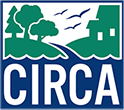Coastal Vulnerability Viewer
Area of Interest
Assessment Type
Contributor Layer Selection
Vulnerability Layer Selection
Layer Selection
Analysis Options
Base Layer
Street Map
Topographic Map
View Options
Coastal Vulnerability Assessment
This viewer examines the direct and indirect future impacts of sea level rise on Connecticut's coastal towns using an index based spatial model. It aims to guide stakeholders to understand the vulnerable regions and their underlying indicators to prioritize resiliency projects.
Cite this viewer as: Balleisen, Z., Onat, Y., Massidda, C., Fake, T. and O'Donnell, J. (2020)."Coastal Vulnerability Index Viewer", University of Connecticut, Connecticut Institute for Resilience and Climate Adaptation, Retrieved from https://vulnerability.circa.uconn.edu/ Last accessed:XX/XX/XXXX.
DATA DISCLAIMER
This information is provided with the understanding that it is not guaranteed to be correct or complete and conclusions drawn from such information are the sole responsibility of the user. Attempts have been made to ensure that this data or documentation is accurate and reliable; The University of Connecticut, nor the Department of Marine Sciences, does not assume liability for any damages caused by inaccuracies in this data or documentation, or as a result of the failure of the data or software to function in a particular manner. The University of Connecticut, nor the CIRCA, makes no warranty, expressed or implied, as to the accuracy, completeness, or utility of this information, nor does the fact of distribution constitute a warranty.
Methodology and Sources
The collected and gridded data layers are ordered from their highest to lowest values in the coastal boundary. The values are divided into five quantiles (0-20% represents the lowest 20% of the dataset, whereas 80-100% represents the highest quantile of data). Each quantile is assigned a rank value to relatively allocate the vulnerability of the layer to the climate hazard (0-20% is assigned to 1 (very low), similarly, 80-100% is assigned to 5(very high)). Thus, the contributor layers are created.



